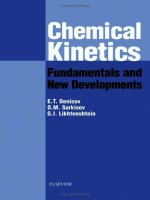HUMAN MILK OLIGOSACCHARIDES: CHEMICAL STRUCTURE, FUNCTIONS AND ENZYMATIC SYNTHESIS
Bạn đang xem bản rút gọn của tài liệu. Xem và tải ngay bản đầy đủ của tài liệu tại đây (439.86 KB, 14 trang )
J. Sci. & Devel., Vol. 10, No. 5: 693-706
Tạp chí Khoa học và Phát triển 2012 Tập 10, số 5: 693-706
www.hua.edu.vn
HUMAN MILK OLIGOSACCHARIDES: CHEMICAL STRUCTURE, FUNCTIONS
AND ENZYMATIC SYNTHESIS
Hoang Anh Nguyen1, Thu-Ha Nguyen2, Dietmar Haltrich2
1
Department of Biochemistry and Food Biotechnology, Faculty of food science and Technology, Hanoi
University of Agriculture, Hanoi, Vietnam; 2Food Biotechnology Laboratory, Department of Food
Sciences and Technology, University of Natural Resources and Life Sciences Vienna, Austria
Email:
Received date: 25.05.2012
Accepted date: 21.08.2012
ABSTRACT
Human milk is considered as the best form of nutrition for the first few months of human life. The part that
contributes to the important function of human milk contains oligosaccharides which are not found in infant formulas.
Human milk oligosaccharides (HMOs) are the third most abundant molecular species in human milk after lactose and
fat and its amount approximates 15 g/L. To date, about 200 HMOs have been purified and their structures have been
determined. Basic core structure of HMOs is lactose at the reducing end elongated by fucose, N-acetylglucosamine
and sialic acid. HMOs are considered to be one of the most important growth factors for intestinal bifidobacteria,
beneficial bacteria dominated in gastrointestinal tract of breast-fed infants, and potential inhibitors of adhesion of
pathogenic bacteria to epithelial surfaces. For this reason, there is a continuous interest in finding structures as well
as synthesis of HMOs by enzymatic method that can be applied for infant foods and drugs. This review focuses on
structure and functions of HMOs, and enzymatic synthesis of some well known HMOs.
Keywords: Human milk oligosaccharides (HMOs), lactose, fucose, N-acetylglucosamine, probiotic
Các Oligosaccharide từ Sữa Người:
Cấu trúc Hóa học, Vai Trị và Sinh Tổng hợp Chúng Bằng Enzyme
TÓM TẮT
Sữa người được coi là nguồn dinh dưỡng tốt nhất cho con người ở giai đoạn mấy tháng đầu đời. Thành phần
quyết định đến vai trò quan trọng này của sữa người mà khơng có ở sữa sản xuất nhân tạo là các oligosaccharide
(HMOs). Hàm lượng HMOs chiếm thứ ba trong sữa người chỉ đứng sau lactose và chất béo, trung bình khoảng
15g/lít sữa. Đến nay, khoảng 200 HMOs đã được tinh sạch và xác định cấu trúc. Cấu trúc cơ bản của HMOs bao
gồm lõi lactose ở đầu khử và được kéo dài bởi fucose, N-acetylglucosamine và axit sialic. HMOs được coi là nhân tố
quan trọng nhất cho sự phát triển của vi khuẩn đường ruột có lợi, có rất nhiều trong hệ thống tiêu hóa dạ dày ruột
của trẻ sơ sinh được nuôi bằng sữa mẹ, và HMOs là chất ức chế sự bám dính của các vi khuẩn độc lên bề mặt của
tế bào biểu mô. Với vai trị quan trọng này của HMOs, việc tìm ra cấu trúc cũng như sinh tổng hợp HMOs bằng
phương pháp enzyme để ứng dụng trong việc sản xuất thực phẩm cho trẻ sơ sinh và thuốc đang rất được quan tâm.
Bài viết này sẽ tập trung tóm lược về cấu trúc và vai trị của HMOs, và q trình tổng hợp một số HMOs phổ biến
trong sữa người bằng phương pháp enzyme.
Từ khóa: Các oligosaccharide trong sữa người (HMOs), lactose; fucose, N-acetylglucosamine, probiotic
1. INTRODUCTION
Human
gastrointestinal
tract
(GIT)
comprises a healthy microbiota dominated by
bifidobacteria (intestinal probiotic bacteria) that
beneficially affect intestinal microbial balance
through a variety of mechanisms (2005). Many
attempts have been made to maintain adequate
693
Human milk oligosaccharides: chemical structure, functions and enzymatic synthesis
amounts of probiotic bacteria in colon, and they
must be taken in sufficient quantities (>1 x
1010/day) (Duggan et al., 2002). Basically, there
are two major strategies for stimulation of the
growth and/or activity of the healthy promoting
bacteria. One approach is supplement of living
bacteria (probiotics) mostly of human origin
(Bifidobacterium and Lactobacillus) to foods,
which must survive the gastrointestinal tract
and beneficially affect the host by improving its
intestinal microbial balance. The second
approach is supplement of non-digestible
oligosaccharides (prebiotics) to foods which
stimulate the growth and /or activity of one or
number of heath promoting colon bacteria and
thus improve host health (Gibson and
Roberfroid, 1995). Probiotics, however, can not
be used in a wide range of food products as they
can not have long life in their active form.
Currently, they are predominantly used in
fermented dairy products that are required
refrigeration to maintain the shelf life
(Sangwan
et al., 2011). Prebiotics can be
applied in wide range of foodstuffs because of
their known advantages: (i) They may be
manufactured by extraction from plan sources,
enzymatic synthesis and enzymatic hydrolysis
of polysaccharides; (ii) Prebiotics are usually
stable in the presence of oxygen, over a wide
range of pH, temperature, and time, which is
not the case for probiotics (Figueroa-Gonzalez
et al., 2011)
In particular, many oligosaccharides have
been commercially produced for functional foods
(fermented milks and yogurts, baby foods, sugar
free confectionary and chewing gum) such as
inulin,
fructo-oligosaccharides,
galactooligosaccharides,
xylo-oligosaccharides,
isomalto- oligosaccharides, etc. (FigueroaGonzalez et al., 2011). However, there are still
many remaining questions regarding the
relation between the structures of non-milkderived oligosaccharides and their biological
functions. Whereas, HMOs have been wildly
proved to putatively modulate the intestinal
microbiota of breast-fed infants by acting as
decoy binding sites for pathogens and as
694
prebiotics for enrichment of beneficial bacteria
(Marcobal et al., 2010). This work aims to
review current knowledge about structures and
functions of HMOs in the GIT of infants whose
immune system is not perfectly developed, and
continuous interest in finding enzymes that can
be applied for HMOs production, especially in
large-scale.
2. STRUCTRURES, BIOSYNTHESIS AND
FUNCTIONS OF HMOs
2.1. Infant microflora
Immediately after a human being is born,
the breast-fed infant gastrointestinal tract is
rapidly colonized by a microbial system often
dominated by bifidobacteria. This microbial
ecosystem consisting a wide range of bacteria
commensally and pathogenically resides is
called infant microflora (German et al., 2008).
To prevent toxicity from pathogenic bacteria,
the constant interaction between the host and
beneficial bacteria in GIT is required. Beneficial
strains may protect host from pathological
bacteria through competition for binding sites
or nutrients, production of inhibitory substances
such as bacteriocin and organic acids (Claud
and Walker 2001)
Bacterial diversity and density in the gut
lumen increase from the upper (esophagus,
stomach and duodenum) to the lower (small
intestine, large intestine and anus) GIT, from
an almost sterile content in the stomach to
colon and faecal sample (Kelly et al., 2005).
Once established, the adult human GIT remains
stable and comprises more than 1000 billion
bacteria with over 1000 different species
(Dethlefsen
et al., 2006). The number of
microbial cells in gut lumen is about 10 times
higher than the number of eukaryote cells in
human body (Guarner and Malagelada, 2003).
In contrast, the infant GIT is more variable in
its composition and less stable over time. The
foetal GIT is sterile and bathed in swallowed
amniotic fluid and rapidly colonized few days
after birth. Bacterial diversity and density are
influenced by factors such as mode of delivery,
Hoang Anh Nguyen, Thu Ha Nguyen, Dietmar Haltrich
the maternal microbiota, gestational age, the
surrounding
environment
and
antibiotic
treatment, and especially infant’s diet (breast
versus formula feeding). This change continues
up to two years of age when microbiota
stabilizes and resembles that of adult (Fanaro
et al., 2003). The bacterial flora is usually
heterogeneous during the first few days of life,
independently of feeding habits, in the
subsequent few days, the composition of the
enteric microbiota of infant is strongly
influenced by diet. Many studies have reported
that bifidobacteria and lactobacilli are dominant
in breast-fed infants, while formula feeding
generally results in a more diverse microbial
population such as E. coli, Clostridia and
Staphylococci… (Martin et al., 2003; Sinkiewicz
and Nordstrom, 2005). A diet of breast milk
creates an environment favoring bifidobacteria
in breast- fed neonates. By the end of first
week, bifidobacteria represent 95% of total
bacteria population in the faeces of exclusively
breast-fed infants, whereas in formula-fed
infants they form less than 70%, and by day 6
bifidobacteria in the GIT of breast-fed infants
already exceeded enterobacteria by a ratio of
1000/1 (Yoshioka et al., 1983). Human breast
milk is a significant source of commensal
bacteria for infants’ GIT, contains up to 109
microbes/L in a healthy mother (Moughan et
al., 1992). The predominance of beneficial
bacteria in the intestinal microbiota of breastfed infants, can infer important health benefits
to infants as well as health status in later life
(Palmer et al., 2007).
2.2. Structures and biosynthesis of HMOs
HMOs are the third most abundant
molecular species in human milk after lactose
and fat and amount approximately 15g/L
(Coppa et al., 1993). They are quantitatively
higher than that of the most relevant domestic
mammals’ milks by a factor of 10 to 100 (Boehm
and Stahl, 2007). Currently, about 200 HMOs
have been purified and determined. However,
detailed structural identification of the HMOs is
still lacking because of the complexity and the
diversity of the structures (Rockova et al.,
2011). Basically, most HMOs contain a lactose
at the reducing end as the core structure,
elongated by N-acetylglucosamine (GlcNAc),
galactose (Gal), sialic acid (also known as Nacetylneuraminic acid; NeuAc), and fucose (Fuc)
at non-reducing end with many and varied
linkages between them. They range from three
to ten monosaccharides in length (McVeagh and
Miller. 1997). As an example, figure 1 indicates
the structures of lacto-N-fucopentaose I, lactoN-fucopentaose II and lacto-N-fucopentaose III.
Few unusual oligosaccharides found in
human milk which do not contain the core
structure, even without lactose at reducing end.
The mechanism to produce these unusual
oligosaccharides is yet unknown. They might be
the products of unknown degradation from larger
HMOs (Kobata, 2010). Due to structural
complexity and variety, HMOs are resistant to
enzymatic hydrolysis in upper gastrointestinal
tract of host. This has been proved by Engfer and
Gnoth with in vitro digestion studies in which
they used human pancreatic juice and brush
border membranes prepared from human or
porcine intestinal tissue samples as enzyme
sources (Engfer et al., 2000; Gnoth et al., 2000).
HMOs are produced with large amount in
milk secreted at early stages of lactation in Golgi
apparatus of cells lining the alveoli and smaller
ductules. Alpha-lactabumin firstly regulates
enzyme galactosyltransferase to produce lactose
in a reaction between UDP-galactose and glucose.
The biosynthetic steps leading from lactose to
HMOs are currently not clear (Bode, 2009).
However, well known structures of HMOs
(galactosyl, N- acetylglucosaminyl, fucosyl and
sialyl) are supposed to form by concerted action of
glycosyltransferases
(Kobata,
2010).
The
elongation of lactose may start by the action of β3-N-acetyl-glucosaminyltransferase
with
an
enzymatic transfer of N-acetyl glucosamine
(GlcNAc) residue through β-1,3-linkage to the
galactose (Gal) residue of lactose, followed by
further addition of Gal through either β-1,3- or β1,4 linkage to GlcNAc to create two major core
695
Human milk oligosaccharides: chemical structure, functions and enzymatic synthesis
Figure 1. Configuration of the isomeric lacto-N-fucopentaoses (I, II, III)
(adapted from Newburg DS, 2009)
tetrasaccharride structures: type 1 chain, lacto-Ntetraose (NTL, Gal--1,3-GlcNAc--1,3-Gal-1,4-Glc); type 2 chain, lacto-N-neotetraose (LNnT,
Gal--1,4-GlcNAc--1,3-Gal--1,4-Glc). These
cores are further elongated or branched by the
addition of various sugars such as Gal, GlcNAc,
Fuc, and sialic acid.
HMOs content varies not only between
duration of lactation, but also during infant’s
gestation, and with genetic makeup of the
mother (McVeagh and Miller, 1997). Amount of
HMOs is the highest in the newborn period,
rising during the first 5 days and then reducing
after the first 3 months (Viverge et al., 1990).
696
2.3. Functions of HMOs in infants
HMOs are considered as (i) the growth
factors for intestinal bifidobacteria in breast-fed
infants and (ii) potential inhibitors of adhesion
of pathogens in infants’ GIT to epithelial
surfaces (Matsuo et al., 2003).
2.3.1.
Growth
factors
for
intestinal
bifidobacteria in breast-fed infants
HMOs have been considered as sole carbon
source (prebiotic) for fermentation of desired
bacteria of breast-fed infants. In the presence of
HMOs, the desired bacteria metabolize HMOs
and the metabolites from degradation of HMOs
Hoang Anh Nguyen, Thu Ha Nguyen, Dietmar Haltrich
serve not only as beneficial components such as
short chain fatty acids for the growth of desired
bacteria but also as growth inhibitors to
undesired bacteria (Bode, 2009).
Many HMO molecules have been purified
from human milk and used in vivo as sole
carbon source for fermentation of bifidobacteria
and lactobacilli. These analyses have shown that
several bifidobacterial species can grow well on
HMOs (Kiyohara et al., 2009; Marcobal et al.,
2010; Rockova et al., 2011). In addition, amount
of intact HMOs were found very low in the feces
of term and preterm breast-fed infants
(Sabharwal et al., 1988; Sabharwal et al., 1988).
This postulates that a majority of HMOs reaches
the large intestine, where they are preferably
used as substrates for bifidobacteria. The
function of HMOs for the enrichment of
bifidobacteria has also been known when a study
indicated the acidity level (metabolites from the
fermentation of bifidobacteria) in feces of breastfed babies is higher than that in feces of formulanourished babies (Kobata, 2003). Moreover, a
cluster of genes encoding for glycosidases
(sialidase,
fucosidase,
N-acetyl-βhexosaminidase, β-galactosidase), that cleave
HMOs into its constituent monosaccharides, and
HMO transporters have been found recently in
the genome of Bifidobacterium longum subsp.
infantis ATCC1569. They are likely linked to
genomic mechanisms of milk utilization for
infants’ bifidobacteria (Sela et al., 2008).
Even though HMOs have been considered as a
sole carbon source for beneficial bacteria in GIT of
infants, direct fermentation of HMOs by
bifidobacteria as well as intestinal bacteria has
been poorly investigated. Rockova and coworkers
(2011) (Rockova et al., 2011) found a great
variability of bifidobateria in the ability to grow on
HMOs.
Bifidobacteria
of
human
origin
(Bifidobacterium bifidum, Bifidobacterium longum)
have a better growth on human milk compared to
those of animal origin (B.animalis). Ward and coworkers (2006) (Ward et al., 2006) pointed out that
Bifidobacterium infantis fermented purified HMOs
as a sole carbon source, while Lactobacillus gasseri,
another gut commensal did not ferment HMO.
These results support the hypothesis that HMOs
selectively affect the commensal bacteria in the
intestinal tract.
2.3.2. Potential inhibitors of pathogen
adhesion
There are two possibilities proposed for
potential inhibitors of pathogen adhesion (figure
2): (i) HMOs are soluble receptor analogues of
epithelial cell-surface carbohydrates, and
compete with epithelial ligands for pathogens
by binding to proteins on the pathogens (lectins
or haemmaglutinnins); (ii) HMOs may also
regulate gene expression related to enzymes
change the cell-surface glycome which could
interfere to adhesion, proliferation, and
colonization of pathogens (Kunz and Rudloff,
1993; Bode, 2009).
To date, two types of HMOs mainly
considered as potential inhibitors of pathogen
adhesion, are fucosylated oligosaccharides and
sialylated
oligosaccharides.
α1,2-Linked
fucosylated HMOs (2’-fucosyllactose, and lactoN-fucopentaose-I), most commonly found in
mothers’ milk, express the inhibition with
pathogens (Morrow et al., 2005). The reason for
this is: α1,2-linked fucosylated HMOs are quite
similar to HAB antigen motif, basis of the
human ABO-histo-blood group system. The
motif with terminal structure Fucα1-2Gal is H
antigen, and H antigen is attached to GlcNAc
with β1,3 and β-1,4-linkages to create H1 and
H2 antigens, respectively. A and B antigens are
formed by adding a Gal or N-acetylgalactosamine (GalNAc) residue to the H
antigen. ABH antigens are very abundant in
red blood cells as well as intestinal epithelium
for human immune system. In vitro tests
indicated that 2’-fucosyllactose can adhere to
Campylobacter jejuni, one of the major causes of
diarrhea (Ruiz-Palacios et al., 2003; Morrow et
al., 2005). Fucosyllated HMOs are also able to
stop the binding of E.coli enterotoxin to the cells
(Kunz
and
Rudloff,
1993).
Sialylated
oligosaccharides prevent the binding of E.coli
strains associated with neonatal meningitis and
sepsis (Kunz and Rudloff, 1993)
697
Human milk oligosaccharides: chemical structure, functions and enzymatic synthesis
Figure 2. Anti-adhesive and glycome-modifying effects of HMOs (adapted from Bode L, 2009)
“Most bacteria (commensals and pathogens) express glycan-binding proteins (lectins), that bind to
glycans on the host’s epithelial cell surface (A), which is essential for bacteria to attach (a), and to
proliferate and colonize the intestine (b). Some pathogens need to attach to the intestinal epithelial
cell surface prior to invading the host (c). HMOs are structurally similar to the intestinal epithelial
cell surface glycans. They can serve as bacterial lectin ligand analogs and block bacterial attachment
(B). HMOs may also alter the intestinal epithelial glycosylation machinery and modify the
cell-surface glycome (“glycocalyx”), which could impact bacterial attachment,
proliferation, colonization (C)” (Bode 2009)
3. ENZYMATIC SYNTHESIS OF HMOs FOR
APPLICATIONS IN FOODS AND DRUGS
Due to important biological functions,
HMOs have attracted considerable interest.
Many methods have been developed for the
synthesis of HMOs that can be applied as
ingredients in infant foods as well as drug
development. In principle, HMOs can be
synthesized by application of enzymes or by
chemical approaches. However, great effort
nowadays has been put into enzymatic methods,
because chemical methods still require multiple
steps to get rid of side products, and this
complexity does not render chemical syntheses
realistic for industrial applications (Scigelova
et al., 1998). Enzymes used for synthesis of
oligosaccharides
can
be
either
glycosyltransferases or glycosidases. However,
currently
enzymatic
methods
using
glycosyltransferases are mostly used because of
highly stereoselective and regioselective bond
formation and no side products formed (Endo
and Koizumi, 2000).
698
Despite their recognized importance for
infant health, synthesis of HMOs have been
hindered by the fact that it is still very difficult
to obtain large quantity of them by enzymatic
synthesis (Chen
et al., 2000). Wild type
enzymes originated from plants and animals
are difficult to obtain in large amount.
Moreover, genes encoding for mammalian
glycosyltransferases are difficult to be
functionally expressed in E.coli. Thus,
production
of
recombinant
eukaryotic
glycosyltransferases
generally
requires
eukaryotic expression systems which often
render the production tedious and expensive.
These points limit the use of enzymatic methods
for industrial production of oligosaccharides
(Matsuo et al., 2003). By contrast, cloning and
expression of bacterial glycosyltransferase
genes in E.coli is much more convenient and
efficient. Recently, the use of metabolically
engineered
bacteria
to
over-express
heterologous
glycosyltransferase
and
glycosidase genes is a powerful new technique
Hoang Anh Nguyen, Thu Ha Nguyen, Dietmar Haltrich
Table 1. HMOs mentioned in this review
Names
Abbreviation
Structures
*
N-acetyl oligosaccharides
Lacto-N-biose I
LNB
Gal-β-1,3-GlcNAc
GlcNAc-β-1,3-Gal
N-acetyllactosamine
LacNAc
Gal-β-1,4-GlcNAc
Allo-LacNAc
Gal-β-1,6-GlcNAc
Lacto-N-triose
LNT-2
GlcNAc-β-1,3-Gal-β-1,4Glc
Lacto-N-neotetraose
LNnT
Gal-β-1,4-GlcNAc-β-1,3-Gal-β-1,4-Glc
Gal-β-1,4-Gal-β-1,4-GlcNAc
Gal-β-1,4-Gal-β-1,4-Gal-β-1,4-GlcNAc
Sialylated oligosaccharides
α 2,3-sialyllactose
3’-SL
Neu5Ac-α-2,3-Gal-β-1,4-Glc
α 2,6-sialyllactose
6’-SL
Neu5Ac-α-2,6-Gal-β-1,4Glc
Fucosyloligosaccharides
’
2’-fucosyllactose
2 FL
Fuc-α-1,2-Gal-β-1,4-Glc
Lacto-N-neo-fucopentaose-1
LNF-1
Fuc-α-1,2-Gal-β-1,4-GlcNAc-β-1,3-Gal-β-1,4-Glc
Lacto-N-neo-fucopentaose
LNnFP
Gal-β-1,4-GlcNAc-β-1,3-Gal-β-1,4-(Fuc-α-1,3)-Glc
Lacto-N-neodifucohexaose
LnNDFH
Gal-β-1,4-(Fuc-α-1,3)-GlcNAc-β-1,3-Gal-β1,4-(Fuc-α-1,3)-Glc
Lacto-N-neodifucooctaose
*
Gal-β-1,4-GlcNAc-β-1,3-Gal-β-1,4-(Fuc-α-1,3)-GlcNAc-β-1,3Gal-β-1,4-(Fuc-α-1,3)-Glc
GlcNAc; N-acetylglucosamine, Gal; galactose, Glc; glucose, Neu5Ac; N-acetylneuraminic acid, Fuc; fucose
that makes the production of HMOs in large
amount with lower cost feasible. Using of whole
cells or glycosyltransferases isolated from
engineered microorganisms as the enzyme
sources may open the way to produce HMOs at
commercial scale that had been not yet
successful. (Endo and Koizumi, 2000; Schwab
and Gaenzle, 2011).
Generally, the steps for enzymatic
synthesis of HMOs using metabolically
engineered E.coli are the following: (1)
designate a β-galactosidase-negative (lacZ-)
E.coli strain in which a lacY gene encoding for
β-galactoside permease still remains; (2)
transform
the
genes
encoding
for
glycosyltransferases that use lactose as acceptor
to the above strain; (3) cultivate this strain at
high cell density on alternative carbon source,
such as glycerol, under the conditions that allow
both glycosyltransferase and β-galactoside
permease genes express; (4) feed the culture
with lactose that should be actively internalized
by the permease and glycosylated by the
transferase; (5) purify and structurally
characterizatize HMOs by chromatography and
NMR (Priem, et al., 2002). This section focuses
on the syntheses, which could be promising for
the applications in large scale production, of
some well known HMOs (Table 1).
3.1. N-acetyloligosaccharides
HMOs containing GlcNAc (the bifidus
factor) are necessary for the growth of
bifidobacteria. These oligosaccharides form
precursors in the biosynthesis of muramic acid,
a component of the bacterial cell wall (McVeagh
and Miller, 1997). Reports, to date, have indicated
that N-acetyloligosaccharides of HMOs can be
produced by N-acetylglucosaminyltransferases, β-Nacetylhexosaminidases (β-N-acetylglucosaminidases/
β-N acetylgalactosaminidases) or β-galactosidases.
Blixt and coworkers (1999) have over-expressed
the Neisseria meninggitidis lgtA gene encoding
for β-1,3-N-acetylglucosaminyltransferase (β-1,3-
699
Human milk oligosaccharides: chemical structure, functions and enzymatic synthesis
GlcNAcT) in E. coli. Characterization of the
recombinant enzyme indicated that this enzyme
is capable to catalyze the transfer of GlcNAc
from UDP-GlcNAc in a β-1,3 linkage to acceptor
(Gal residues) to create oligosaccharides with
GlcNAc-β-1,3-Gal linkage (Blixt et al., 1999).
Johnson and coworkers (1999) have developed
enzyme-based technologies to successively
synthesize several relevant HMOs using cloned
bacterial glycosyltransferases (β-1,3-GlcNAcT;
β1,4-galactotransferase (β-1,4-GalT); and α2trans-sialidase). In the first step, they
successfully scaled up and produced 250 grams of
LNT-2 (GlcNAc-β-1,3-Gal-β-1,4Glc) from 100 L
reactor containing lactose, UDP-GlcNAc and β1,3-GlcNAcT, and then in the second step more
than 300 grams of lacto-N-neotetraose (LNnT;
Gal-β-1,4-GlcNAc-β-1,3Gal-β1,4-Glc)
were
formed from 100 L reactor containing LNT-2,
UDP-Gal and β-1,4-GalT (Johnson, 1999).
However, these methods still require
nucleotide-substrates. Liu and coworkers (2003)
have co-expressed 4 enzymes (sucrose synthase
(SusA); UDP-Glc-4-epimerase (GalE); β-1,4GalT; α-1,4-galactotransferase (α-1,4GalT) in a
single genetically engineered E.coli strain with
high level of UTP production. SusA catalyzes
the cleavage of sucrose to UDP-glucose and
fructose. UDP-glucose is converted into UDPgalactose by GalE, and then β-1,4-GalT
transfers galactose from UDP-galactose to
acceptor (GlcNAc) to form N-acetyllactosamine
(LacNAc, Gal-β-1,4-GlcNAc). LacNAc is then
combined with an additional galactosyl by α1,4GalIT, resulting in the synthesis of 5.4 g of
Gal-α-1,4-Gal-β-1,4-GlcNAc in 200ml reaction
volume with 67% yield based on the
consumption of GlcNAc (Liu et al., 2003).
A new fermentation process allowing largescale production of HMOs by metabolically
engineered bacteria has been reported by Priem
and coworkers (2002). A β-galactosidase negative (LacZ-) E.coli strain carrying lgtA gene
from Neisseria meningitides was cultivated at
high density with glycerol as the sole carbon
source using classical fed-batch strategy. This
700
fermentation resulted in over-expession of lgtA
and the synthesis of 6 g.L-1 of expected
extracellular trisaccharide LNT-2 by β-1,3GlcNAcT transfers GlcNAc to lactose. When lgtB
gene encoding for the β-1,4-GalT from Neisseria
meningitides was co-expressed with lgtA, LNT-2
was further converted to lacto-N-neotetraose
(Gal-β-1,4-GlcNAc-β-1,3-Gal-β-1,4-Glc). However,
for this co-expression, glucose instead of glycerol
has to be used as sole carbon source for
cultivation, and the product mainly remained
intracellular (Priem et al., 2002).
β-N-acetylhexosaminidases (EC 3.2.1.52)
are glycoside hydrolases, like typical exoenzymes. Some of them (mostly from fungi) not
only can cleave the terminal β-D-GlcNAc and βD-GalNAc
residues
in
N-acetyl-β-Dhexosaminides, but also can then transfer β-DGlcNAc and β-D-GalNAc residues to broad
variety of glycosidic and non-glycosidic
acceptors (Slamova et al., 2010). N-acetyl-β-Dhexosaminides are easily obtained from
hydrolysis of chitin, a second most abundant
polysaccharide in nature after cellulose, using
chitinases (Lee
et al., 2007). Thus, the
promising strategy is finding suitable β-Nacetylhexosaminidases that can be applied to
produce
HMOs
using
N-acetylchiooligosaccharides,
products
of
chitin
degradation, as donors. This would enable the
use of low cost and easily available starting
materials for the large-scale synthesis of novel
oligosaccharides. To date, this strategy has been
successfully used for activated substrates
(derivatives
of
GlcNAc
or
N-acetylchitooligosaccharides), however it is not yet
applied for food applications and large scale
production because of toxicity and high cost
(Singh, et al., 1997; Kurakake et al., 2003;
Weignerova et al., 2003).
Matsuo and coworkers (2003) have used
recombinant β-N-acetylglucosaminidases from
Aspergillus ozyrae to produce HMOs by reverse
hydrolysis reaction, but the yield was very low
with only 0.21 % of LNT-2 and 0.15% of its
isomer (GlcNAc-β-1,6-Gal-β-1,4-Glc) (Matsuo
et al., 2003).
Hoang Anh Nguyen, Thu Ha Nguyen, Dietmar Haltrich
Recently, enzyme β-galactosidase from
Bacillus circulans was found that they can
hydrolyze lactose (donor) and then transfer
galactosyl products to receptors (GlcNAc or
GalNAc) (Sakai et al., 1992; Usui et al., 1996;
Hernaiz and Crout 2000; Li et al., 2010). Some
N-acetyloligosaccharides have been produced,
such as Gal-β-1,4-GlcNAc with yield of 23.2%
(Sakai et al., 1992), a mixture of LacNAc, alloLacNAc (Gal-β-1,6-GlcNAc), Gal-β-1,4-Gal-β1,4-GlcNAc, and Gal-β-1,4-Gal-β-1,4-Gal-β1,4-GlcNAc with ratio of 28.75 %, 2.29%, 9.47%,
5.67%, respectively (Li et al., 2010)
3.2. Sialylated oligosaccharides
Human milk, containing more than three
times of sialylated oligosaccharides compared to
cow’ milk, is an important source of sialic acids
for
breast-fed
infants.
Sialylated
oligosaccharides are used for biosynthesis of
mucins, glycoproteins and gangliosides which
are concentrated in plasma membranes of nerve
cells (McVeagh and Miller, 1997; Wang et al.,
2001). Sialylated oligosaccharides are also
known to have both anti-infective and
immunostimulating properties (Boehm and
Stahl 2007). Sialylated HMOs, believed to
protect breast-fed infants from infection, consist
of N-acetylneuraminic acid (NeuAc) attached to
Gal through α-(2,3) or α-(2,6) linkage.
From general principle of syalyllactose
biosynthesis (figure 3), Gilbert and co-workers
(1997) have characterized the gene encoding for
α-2,3-sialyltransferase
from
Neisseria
meningitides (Gilbert et al., 1997), then fused it
with
gene
encoding
for
CMP-Neu5Ac
synthetase and expressed in E.coli. The fusion
protein was used to produce α-2,3-sialyllactose
at the 100 g scale using a sugar nucleotide cycle
reaction, starting from lactose, sialic acid,
phosphoenolpyruvate and catalytic amounts of
ATP and CMP. However, this method requires
expensive substrates, thus it is not applicable
for large scale. To solve this drawback,
permeabilized and alive whole E.coli cells have
been used.
Endo and coworkers (2000) (Endo et al.,
2000) have developed a large-scale production
of
cytidine
5’monophospho-Nacetylneuraminic acid (CMP-NeuAc) and
sialylated
oligosaccharides
through
a
combination of recombinant E.coli strains and
Corynebacterium ammoniagenes (bacterial
coupling). The CMP-NeuAc production system
consisted of Corynebacterium ammoniagenes
having strong activity to convert orotic acid to
UTP, and two recombinant E. coli strains overexpressing the genes encoding for CTP
synthetase and CMP-NeuAc synthetase. When
E. coli cells with over-expressed gene encoding
for α-2,3-sialyltransferase from Neisseria
gonorrhoeae were used for the CMP-NeuAc
production system, 33 g/L of 3′-sialyllactose
were produced after 11 h of reaction starting
with orotic acid, NeuAc and lactose (Endo et
al., 2000). In this system the activated sialic
acid donor (CMP-Neu5Ac) was generated from
exogenous sialic acid, which was transported
into the cells by the permease NanT. Thus the
disadvantage of this method is that it still
requires an expensive compound (sialic acid).
To avoid this drawback, recently, Fierfort
and coworkers (2008) and Drounilard and
coworkers (2010) have successfully developed a
microbiological process to economically produce
3′sialyllactose (Fierfort and Samain, 2008) and
6′sialyllactose (Drouillard
et al., 2010),
respectively, without any exogenous supply
(Figure 3). These strains co-expressed the α-2,3sialyltransferase
gene
from
Neisseria
meningitides, or α-2,6-sialyltransferase gene
from Photobacterium sp. JT-ISH-224 with the
neuC, neuB and neuA Campylobacter jejuni
genes
encoding
N-acetylglucosamine-6phosphate-epimerase, sialic acid synthase and
CMP-Neu5Ac synthetase, respectively. The
concentration of 3′sialyllactose and 6′sialyllactose
(Gibson et al., 2005) obtained from long term
high cell density culture with a continuous
lactose feed were 25 gL-1 and 30g/L, respectively.
This method is highly promising for the
production of syalyllactose at commercial scale.
701
Human milk oligosaccharides: chemical structure, functions and enzymatic synthesis
Figure 3. Engineered metabolic pathway for the production of 6’-sialyllactose (Adapted
from Drounilard, 2010) "Over-expressed heterologous genes are in bold. Discontinued arrows
represent the enzymatic activities that have been eliminated. Lactose is internalized by lactose
permease and sialylated by recombinant α-2,6-sialyltransferase using CMP-Neu5Ac produced from
UDP-GlcNAc by the successive action of the N-acetylglucosamine-6-phosphate-epimerase NeuC, the
sialic acid synthase NeuB, and the CMP-Neu5Ac synthetase NeuA. The β-galactosidase gene lacZ
was knocked out to prevent lactose hydrolysis and the nanA and nanK genes were knocked out to
prevent the formation of futile cycles in the CMPNeu5Ac biosynthesis pathway"
3.3. Fucosyloligosaccharides
Enzymatic synthesis of fucose-containing
oligosaccharides such as ABH and Lewis
antigens has long been achieved (Kameyama et
al., 1991; Murata et al., 1999; Zeng et al.,
1999). However, the cost of synthesis substrates
(GDP-β-L-fucose,
p-nitrophenyl
α-Lfucopyranoside) used by fucosyltransferse, is a
limiting factor for large scale applications. To
overcome this disadvantage, several studies
have focused on the way to produce
metabolically engineered E. coli containing
fucosyltransferase that can be applied for
production of fucosyloligosaccharides (Dumon
et al., 2001; Drouillard et al., 2006).
Based on the biosynthesis mechanism of
GDP-fucose in both prokaryote and eukaryotes
702
(Stevenson et al., 1996; Andrianopoulos et al.,
1998) (Figure 4 A), Dumon and coworkers
(Dumon
et al., 2001) have designated an
engineered E.coli strain which is capable of
overproducing GDP-fucose by inactivation of
the gene wcaJ involved in colonic acid synthesis
and over-expression of RcsA, a positive
regulator of the colonic acid operon. The gene
fucT encoding for α-1,3 fucosyltransferase from
Helicobacter pylori then has been successfully
co-expressed with lgtA and lgtB gene encoding
for
β1,3-GlcNAc-transferase
and
β1,4galactotransferase of Neisseria meningitides,
respectively. When this engineered E.coli strain
is cultivated in medium containing lactose,
the obtained fucosyloligosaccahrides are lactoN-neo-fucopentaose
(LNnFP;
Gal-β-1,4GlcNAc-β-1,3 Gal-β-1,4-(Fuc-α-1,3)-Glc) and two
Hoang Anh Nguyen, Thu Ha Nguyen, Dietmar Haltrich
B
A
Figure 4. Invivo biosynthesis pathway for LNnFP and LNnDFH (A), LNF-1 and 2’-FL (B),
adapted from Dumon (2001) and Drouillard (2006), respectively
oligosaccharides carrying Lex motif: lacto-Nneodifucohexaose (LnNDFH, Gal-β-1,4-(Fuc-α1-3)-GlcNAc-β-1,3-Galβ-1,4-(Fuc-α-1,3)-Glc),
lacto-N-neodifucooctaose
(Gal-β-1,4-GlcNAcβ1,3-Gal-β-1,4-(Fucα1-3)-GlcNAc-β-1,3-Gal-β1,4-(Fuc-α-1,3)-Glc). The main product, LNnFP
(~80% of total fucosylated fraction) was
approximately 3g L-1.
Similarly, Drouillard and co-workers
(Drouillard
et al., 2006), later on, have
developed an efficient method for production of
H-antigen oligosaccharides: fucosyl α1,2-linked
oligosaccharides
(lacto-N-neofucopentaose-1;
Fuc-α-1,2-Gal-β-1,4-GlcNAc-β-1,3-Gal-β-1,4Glc; and 2′-fucosyllactose; Fuc-α-1,2-Gal-β-1,4Glc) by a metabolically engineered E.coli strain
(Drouillard, Driguez et al., 2006) (figure 4 B).
The plasmid pET21a carrying futC gene
encoding for α1, 2-fucosyltransfersase and the
plasmid pLNTR carrying lgtA,B and rcsA genes
encoding for β1,3-GlcNAc-transferase; β1,4-
galactotransferase and a positive regulator of the
colonic acid operon for synthesis of GDP-fucose,
respectively, were co-transformed in this E.coli
strain. This metabolically engineered E.coli
strain was then grown with glucose as a carbon
source, and fed with lactose as a receptor. Three
grams of a mixture of 2′-fucosyllactose and lactoN-neofucopentaose-1 (in the ratio 23:57), was
produced from 1L culture (5g.L-1 lactose). Yield of
lacto-N-neofucopentaose-1 can be improved by
delaying activity of futC until Gal-β-1,4-GlcNAcβ-1,3-Gal-β-1,4-Glc is synthesized in large
amount (figure 4B)
4. CONCLUSION
HMOs are the third most abundant
molecular species in human milk after lactose and
fat. Structure of HMOs contains lactose at
reducing
end
elongated
with
Nacetylglucosamine,
L-fucose
and
N-acetyl
neuraminic acid. Even though 200 HMOs are
703
Human milk oligosaccharides: chemical structure, functions and enzymatic synthesis
currently
determined,
detail
structural
identification of the HMOs is still lacking because
of the complexity and diversity of the structures.
Two potential properties of HMOs, which are as
the “growth factors for intestinal bifidobacteria in
breast-fed infants” and the “inhibitors of adhesion
of pathogens” have been well documented.
Therefore, many HMOs are of interest for
applications in infant foods as well as drug
development. These HMOs have been produced by
enzymatic
method
mostly
using
glycosyltransferases,
and
especially
the
approaches using metabolically engineered
bacteria allow the production of HMOs in large
scale. However, a suitable approach for a
commercial scale production of HMOs, that has
not yet been successful, is of a continuous interest.
REFERENCES
Andrianopoulos K., L. Wang, P. R. Reeves (1998).
"Identification of the fucose synthetase gene in the
colanic acid gene cluster of Escherichia coli K-12".
Journal of Bacteriology 180(4): 998-1001.
Blixt, O., I. van Die., T.Norberg., D.H. Van Den
Eijnden (1999). "High-level expression of the
Neisseria meningitidis lgtA gene in Escherichia
coli and characterization of the encoded Nacetylglucosaminyltransferase as a useful catalyst
in the synthesis of GlcNAc beta 1 -> 3Gal and
GalNAc beta 1-3Gal linkages". Glycobiology
9(10): 1061-1071.
Bode, L. (2009). "Human milk oligosaccharides:
prebiotics and beyond". Nutrition Reviews 67(11):
S183-S191.
Boehm, G. and B. Stahl (2007). "Oligosaccharides from
milk". Journal of Nutrition 137(3): 847S-849S.
Chen, X., P. Kowal., P. G. Wang (2000). "Large-scale
enzymatic synthesis of oligosaccharides". Current
opinion in drug discovery & development 3(6):
756-63.
Claud, E. C. and W. A. Walker (2001). "Hypothesis:
inappropriate colonization of the premature
intestine can cause neonatal necrotizing
enterocolitis". Faseb Journal 15(8): 1398-1403.
Coppa, G. V., O. Gabrielli., P. Pierani., C.Catassi.,
A.Carlucci., P.L.Giorgi (1993). "Changes in
Carbohydrate-Composition in Human-Milk over 4
Months of Lactation". Pediatrics 91(3): 637-641.
Dethlefsen, L., P. B. Eckburg., E. M. Bik., D. A.
Relman,(2006). "Assembly of the human intestinal
microbiota". Trends in Ecology & Evolution 21(9):
517-523.
704
Drouillard, S., H. Driguez., E Samain (2006). "Largescale synthesis of H-antigen oligosaccharides by
expressing Helicobacter pylori alpha 1,2fucosyltransferase in metabolically engineered
Escherichia coli cells". Angewandte ChemieInternational Edition 45(11): 1778-1780.
Drouillard, S., T. Mine., H.Kajiwara., T.Yamamoto.,
E.Samain (2010). "Efficient synthesis of 6 'sialyllactose, 6,6 '-disialyllactose, and 6 '-KDOlactose by metabolically engineered E. coli
expressing a multifunctional sialyltransferase from
the Photobacterium sp JT-ISH-224". Carbohydrate
Research 345(10): 1394-1399.
Duggan, C., J. Gannon., W.A.Walker (2002).
"Protective nutrients and functional foods for the
gastrointestinal tract". American Journal of
Clinical Nutrition 75(5): 789-808.
Dumon, C., B. Priem., S.L.Martin., A.Heyraud., C.Bosso.,
E.Samain (2001). "In vivo fucosylation of lacto-Nneotetraose and lacto-N-neohexaose by heterologous
expression of Helicobacter pylori alpha-1,3
fucosyltransferase in engineered Escherichia coli".
Glycoconjugate Journal 18(6): 465-474.
Endo, T. and S. Koizumi (2000). "Large-scale
production of oligosaccharides using engineered
bacteria". Current Opinion in Structural Biology
10(5): 536-541.
Endo, T., S. Koizumi., K.Tabata., A.Ozaki (2000).
"Large-scale production of CMP-NeuAc and
sialylated oligosaccharides through bacterial
coupling".
Applied
Microbiology
and
Biotechnology 53(3): 257-261.
Engfer, M. B., B. Stahl., B.Finke., G.Sawatzki.,
H.Daniel (2000). "Human milk oligosaccharides
are resistant to enzymatic hydrolysis in the upper
gastrointestinal tract". American Journal of
Clinical Nutrition 71(6): 1589-1596.
Fanaro, S., R. Chierici., P.Guerrini., V.Vigi (2003).
"Intestinal microflora in early infancy: composition
and development". Acta Paediatrica 92: 48-55.
Fierfort, N. and E. Samain (2008). "Genetic
engineering of Escherichia coli for the economical
production of sialylated oligosaccharides". Journal
of Biotechnology 134(3-4): 261-265.
Figueroa-Gonzalez, I., G. Quijano., G.Ramirez.,
A.Cruz-Guerrero (2011). "Probiotics and prebiotics
- perspectives and challenges". Journal of the
Science of Food and Agriculture 91(8): 1341-1348.
German, J. B., S. L. Freeman., C.B.Lebrilla., D.A.Mills
(2008). "Human milk oligosaccharides: evolution,
structures and bioselectivity as substrates for
intestinal bacteria". Nestle Nutrition workshop
series. Paediatric programme 62: 205.
Gibson, G. R., A. L. McCartney., R.A.Rastall (2005).
"Prebiotics and resistance to gastrointestinal
infections". British Journal of Nutrition 93: S31-S34.
Hoang Anh Nguyen, Thu Ha Nguyen, Dietmar Haltrich
Gibson, G. R. and M. B. Roberfroid (1995). "Dietary
Modulation of the Human Colonic Microbiota Introducing the Concept of Prebiotics". Journal of
Nutrition 125(6): 1401-1412.
Gilbert, M., A. M. Cunningham., D.C.Watson., A.
Martin., J.C.Richards., W.W. Wakarchuk (1997).
"Characterization of a recombinant Neisseria
meningitidis alpha-2,3-sialyltransferase and its
acceptor specificity". European Journal of
Biochemistry 249(1): 187-194.
Gnoth, M. J., C. Kunz., E. Kinne-Saffran., S. Rudloff
(2000). "Human milk oligosaccharides are
minimally digested in vitro". Journal of Nutrition
130(12): 3014-3020.
Guarner, F. and J. R. Malagelada (2003). "Gut flora in
health and disease". Lancet 361(9356): 512-519.
Hernaiz, M. J. and D. H. G. Crout (2000). "A highly
selective synthesis of N-acetyllactosamine
catalyzed by immobilised beta-galactosidase from
Bacillus circulans". Journal of Molecular Catalysis
B-Enzymatic 10(4): 403-408.
Johnson, K. F. (1999). "Synthesis of oligosaccharides
by bacterial enzymes". Glycoconjugate Journal
16(2): 141-146.
Kameyama, A., H. Ishida., M.Kiso., A.Hasegawa
(1991).
"Synthetic
Studies
on
Sialoglycoconjugates. 21. Total Synthesis of Sialyl
Lewis-X". Carbohydrate Research 209: C1-C4.
Kelly, D., S. Conway., R.Aminov (2005). "Commensal
gut bacteria: mechanisms of immune modulation".
Trends in Immunology 26(6): 326-333.
Kiyohara, M., A. Tachizawa., M.Nishimoto., M.Kitaoka.,
H.Ashida., K.Yamamoto (2009). "Prebiotic Effect of
Lacto-N-biose I on Bifidobacterial Growth".
Bioscience Biotechnology and Biochemistry 73(5):
1175-1179.
Kobata, A. (2003). "Possible application of milk
oligosaccharides for drug development. "Chang
Gung medical journal 26(9): 621-36.
Kobata, A. (2010). "Structures and application of
oligosaccharides in human milk". Proceedings of
the Japan Academy Series B-Physical and
Biological Sciences 86(7): 731-747.
Kunz, C. and S. Rudloff (1993). "Biological Functions
of Oligosaccharides in Human-Milk". Acta
Paediatrica 82(11): 903-912.
Kurakake, M., T. Goto., K.Ashiki., Y Suenaga., T.
Komaki. (2003). "Synthesis of new glycosides by
transglycosylation of N-acetylhexosaminidase from
Serratia marcescens YS-1". Journal of Agricultural
and Food Chemistry 51(6): 1701-1705.
Lee, Y. S., I. H. Park., J.S.Yoo; S.Y.Chung., Y.C.Lee.,
Y.S. Cho., C.M. Kim., Y.L.Choi (2007). "Cloning,
purification, and characterization of chitinase from
Bacillus sp. DAU101". Bioresour Technol 98(14):
2734-41.
Li, W., Y. Sun., H.Ye., X. Zeng (2010). "Synthesis of
oligosaccharides
with
lactose
and
Nacetylglucosamine as substrates by using beta-dgalactosidase from Bacillus circulans". European
Food Research and Technology 231(1): 55-63.
Liu, Z. Y., Y. Q. Lu., J.B. Zhang., L.Pardee., P.G.Wang
(2003). "P1 trisaccharide (Gal alpha 1,4Gal beta
1,4GlcNAc) synthesis by enzyme glycosylation
reactions using recombinant Escherichia coli".
Applied and Environmental Microbiology 69(4):
2110-2115.
Marcobal, A., M. Barboza., J.W.Froehlich., D.E. Block.,
J.B.German., C.B.Lebrilla., D.A. Mills (2010).
"Consumption of Human Milk Oligosaccharides by
Gut-Related Microbes". Journal of Agricultural and
Food Chemistry 58(9): 5334-5340.
Martin, R., S. Langa., C. Reviriego., E.Jimenez., M.L.
Marin., J.Xaus., L. Fernandez., J.M.
Rodriguez (2003). "Human milk is a source of lactic
acid bacteria for the infant gut". Journal of
Pediatrics 143(6): 754-758.
Matsuo, I., S. Kim., Y.Yamamoto., K.Ajisaka., J.
Maruyama., H Nakajima., K.Kitamoto (2003).
"Cloning and overexpression of beta-Nacetylglucosaminidase encoding gene nagA from
Aspergillus oryzae and enzyme-catalyzed synthesis
of human milk oligosaccharide". Bioscience
Biotechnology and Biochemistry 67(3): 646-650.
McVeagh, P. and J. B. Miller (1997). "Human milk
oligosaccharides: Only the breast". Journal of
Paediatrics and Child Health 33(4): 281-286.
Morrow, A. L., G. M. Ruiz-Palacios., X.Jiang., D.S.
Newburg (2005). "Human-milk glycans that inhibit
pathogen binding protect breast-feeding infants
against infectious diarrhea". Journal of Nutrition
135(5): 1304-1307.
Moughan, P. J., M. J. Birtles., P.D. Cranwell.,
W.C.Smith., M.Pedraza (1992). "The piglet as a
model animal for studying aspects of digestion and
absorption in milk-fed human infants". World
review of nutrition and dietetics 67: 40-113.
Murata, T., S. Morimoto., X.X.Zeng., S.Watanabe.,
T.Usui (1999). "Enzymatic synthesis of alpha-Lfucosyl-N-acetyllactosamines and 3 '-O-alpha-Lfucosyllactose utilizing alpha-L-fucosidases".
Carbohydrate Research 320(3-4): 192-199.
Newburg, D. S. (2009). "Neonatal protection by an
innate immune system of human milk consisting of
oligosaccharides and glycans". Journal of animal
science 87(13): 26-34.
Palmer, C., E. M. Bik., D.B.DiGiulio., D.A.Relman.,
P.O. Brown(2007). "Development of the human
infant intestinal microbiota". Plos Biology 5(7):
1556-1573.
Priem, B., M. Gilbert., W.W. Wakarchuk., A Heyraud.,
E. Samain (2002). "A new fermentation process
705
Human milk oligosaccharides: chemical structure, functions and enzymatic synthesis
allows large-scale production of human milk
oligosaccharides by metabolically engineered
bacteria". Glycobiology 12(4): 235-240.
Rockova, S., J. Nevoral., V. Rada., P.Marsik.,
J.Sklenar., A.Hinkova., E.Vlkova., M. Marounek
(2011). "Factors affecting the growth of
bifidobacteria in human milk". International Dairy
Journal 21(7): 504-508.
Ruiz-Palacios, G. M., L. E. Cervantes., P. Ramos., B.
Chavez-Munguia.,
D.S.
Newburg
(2003).
"Campylobacter jejuni binds intestinal H(O)
antigen (Fuc alpha 1, 2Gal beta 1, 4GlcNAc), and
fucosyloligosaccharides of human milk inhibit its
binding and infection". Journal of Biological
Chemistry 278(16): 14112-14120.
Sabharwal, H., B. Nilsson., M.A. Chester., F. Lindh.,
G.Gronberg., S. Sjoblad., A. Lundblad (1988).
"Oligosaccharides from Feces of a Blood-Group-B,
Breast-Fed Infant". Carbohydrate Research 178:
145-154.
Sabharwal, H., B. Nilsson., G. Gronberg.,
M.A.Chester., J. Dakour., S. Sjoblad., A.Lundblad
(1988). "Oligosaccharides from Feces of Preterm
Infants Fed on Breast-Milk". Archives of
Biochemistry and Biophysics 265(2): 390-406.
Sakai, K., R. Katsumi., H.Ohi., T.Usui., Y.Ishido
(1992).
"Enzymatic
Syntheses
of
NAcetyllactosamine and N-Acetylallolactosamine by
the Use of Beta-D-Galactosidases". Journal of
Carbohydrate Chemistry 11(5): 553-565.
Sangwan, V., S. K. Tomar., R.R.B. Singh., A.K.Singh.,
B. Ali (2011)".Galactooligosaccharides: Novel
Components of Designer Foods". Journal of Food
Science 76(4): R103-R111.
Schwab, C. and M. Gaenzle (2011). "Lactic acid
bacteria
fermentation
of
human
milk
oligosaccharide
components,
human
milk
oligosaccharides and galactooligosaccharides".
Fems Microbiology Letters 315(2): 141-148.
Scigelova, M., P. Sedmera., V.Havlicek., V.
Prikrylova., V.Kren (1998). "Glycosidasecatalysed synthesis of ergot alkaloid alphaglycosides". Journal of Carbohydrate Chemistry
17(6): 981-986.
Sela, D. A., J. Chapman., A.Adeuya., J.H. Kim.,
F.Chen., T.R. Whitehead., A. Lapidus., D.S.
Rokhsar., C.B.Lebrilla., J.B. German., N.P.Price.,
P.M.Richardson., D.A: Mills (2008). "The genome
sequence of Bifidobacterium longum subsp infantis
reveals adaptations for milk utilization within the
infant microbiome". Proceedings of the National
Academy of Sciences of the United States of
America 105(48): 18964-18969.
Singh, S., M. Scigelova., P.Critchley., D.H.G.Crout
(1997). "Trisaccharide synthesis by glycosyl
transfer
from
p-nitrophenyl
beta-D-N-
706
acetylgalactosaminide on to disaccharide acceptors
catalysed by the beta-N-acetylhexosaminidase
from Aspergillus oryzae". Carbohydrate Research
305(3-4): 363-370.
Sinkiewicz, G. and E. A. Nordstrom (2005).
"Occurrence of Lactobacillus reuteri, Lactobacilli
and Bifidobacteria in human breast milk". Pediatric
Research 58(2): 415-415.
Slamova, K., P. Bojarova., L. Petraskova., V. Kren
(2010). "beta-N-Acetylhexosaminidase: What's in a
name... ?" Biotechnology Advances 28(6): 682-693.
Stevenson, G., K. Andrianopoulos., M.Hobbs.,
P.R.Reeves (1996). "Organization of the
Escherichia coli K-12 gene cluster responsible for
production of the extracellular polysaccharide
colanic acid". Journal of Bacteriology 178(16):
4885-4893.
Usui, T., S. Morimoto., Y.Hayakawa., M.Kawaguchi.,
T.Murata., Y. Matahira., Y. Nishida(1996).
"Regioselectivity
of
beta-D-galactosyldisaccharide formation using the beta-Dgalactosidase
from
Bacillus
circulans".
Carbohydrate Research 285: 29-39.
Viverge, D., L. Grimmonprez., G.Cassanas., L Bardet.,
M.Solere (1990). "Variations in Oligosaccharides
and Lactose in Human-Milk During the 1st Week
of
Lactation".
Journal
of
Pediatric
Gastroenterology and Nutrition 11(3): 361-364.
Wang, B., J. B. Miller., Y.Sun., Z.Abmad.,
P.McVeagh., P. Petocz (2001). "A longitudinal
study of salivary sialic acid in preterm infants:
Comparison of human milk-fed versus formula-fed
infants". Journal of Pediatrics 138(6): 914-916.
Ward, R. E., M. Ninonuevo., D.A. Mills., C.B.
Lebrilla., J.B. German (2006). "In vitro
fermentation of breast milk oligosaccharides by
Bifidobacterium infantis and Lactobacillus
gasseri". Applied and Environmental Microbiology
72(6): 4497-4499.
Weignerova, L., P. Vavruskova., A. Pisvejcova.,
J.Thiem., V.Kren (2003). "Fungal beta-Nacetylhexosaminidases
with
high
beta-Nacetylgalactosaminidase activity and their use for
synthesis
of
beta-GalNAc-containing
oligosaccharides". Carbohydrate Research 338(9):
1003-1008.
Yoshioka, H., K. Iseki., K. Fujita (1983).
"Development and Differences of Intestinal Flora
in the Neonatal-Period in Breast-Fed and BottleFed Infants". Pediatrics 72(3): 317-321.
Zeng, S., R. Gutierrez Gallego., A, Dinter., M.
Malissard., J.P. Kamerling., J.F.G. Vliegenthart.,
E.G.Berger (1999). "Complete enzymic synthesis
of the mucin-type sialyl Lewis x epitope, involved
in the interaction between PSGL-1 and P-selectin".
Glycoconjugate Journal 16(9): 487-497.
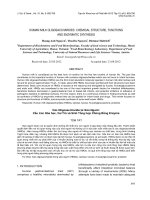
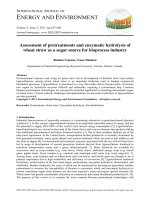
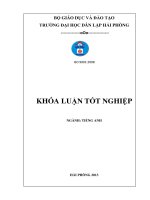


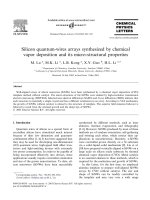
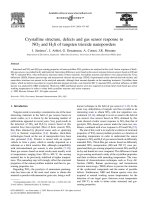

![Báo cáo khoa học: Properties and significance of apoFNR as a second form of air-inactivated [4Fe-4S]ÆFNR of Escherichia coli pot](https://media.store123doc.com/images/document/14/rc/at/medium_ata1395562826.jpg)
